
© World Music Institute. (Click image for larger version)
World Music Institute, Dancing the Gods season
Program 1: Rahul Acharya and Vidhya Subramanian
Program 2: Shambhavi Dandekar and Janaki Rangarajan
New York, Skirball Center for the Performing Arts
26, 27 April 2014
www.worldmusicinstitute.org
nyuskirball.org
Gods Among Us
In New York we are lucky to see quite a bit of Indian classical dance. The local crowd has developed a taste for it, and thus has been spoiled with some memorable performances, including not infrequent visits by the extraordinary Nrityagram ensemble, led by the choreographer Surupa Sen. Sen, who for the last two decades has been expanding the choreographic range of odissi, will be at the Baryshnikov Arts Center May 1-2 with her longest-running collaborator, Bijayini Satpathy. They are both powerhouses. But there have been others, too: in 2012, the bharata natyam dancer Malavika Sarukkai performed an extraordinary program in which, among other things, she accomplished radical shifts of perspective, from embodying a bird flying through the sky to showing the bird’s path as seen from the ground, to revealing the bird’s point of view. And I will never forget a performance by the kuchipudi dancer, Shantala Shivalingappa, in which she depicted the Goddess Padmavati awaking from a dream; as she turned toward her (invisible) husband, still sleeping soundly, she smiled with the recognition that what she had experienced was a product of her sleeping mind. All of this was completely clear from her mime and expression. At once, she was the goddess, and one of us.
What do all these performances have in common? An uncanny musicality, in which the steps and the music seem to arise from the same impulse, a dramatic ability that transports the viewer directly into the story, without any conscious suspension of disbelief and sophisticated choreography that, while remaining within the classical canon, looks new and consistently surprising.
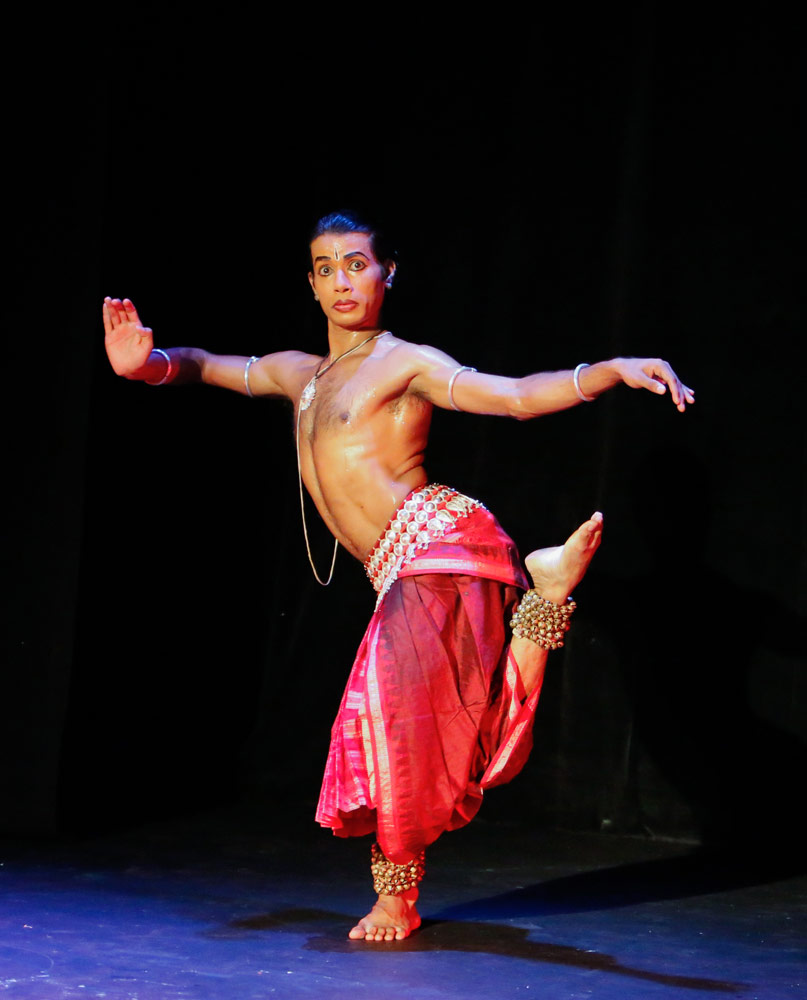
© World Music Institute. (Click image for larger version)
There are various festivals that bring Indian dance to New York – Erasing Borders and Drive East! are just two – but the World Music Institute’s Dancing the Gods series, co-curated by Rajika Puri, is among the most probing and serious. Puri is an indefatigable promoter and researcher, as well as a performer. Before each show, she gives informative, lively introductions. This past week the festival returned for the third time; the organizers went out on a limb, inviting a quartet of younger, lesser-known dancers, who shared two double-bills. One, Rahul Acharya, was an anomaly: a male practitioner of the predominantly female-style odissi (which originated as a devotional dance performed by devadasis in temples.)
This mixed format presented some complications. Without the opportunity to develop a full evening, it’s harder for the artists to bring the audience into their world. Each evening felt a little like a collection of greatest hits. How were the individual pieces supposed to fit together? More problematic, not all were accompanied by live music. This is something the organizers should reconsider in the future, if at all possible. Indian dance, like flamenco, lives in the little variations of rhythm and constant interplay of musicians and dancers. The two are inextricably linked.
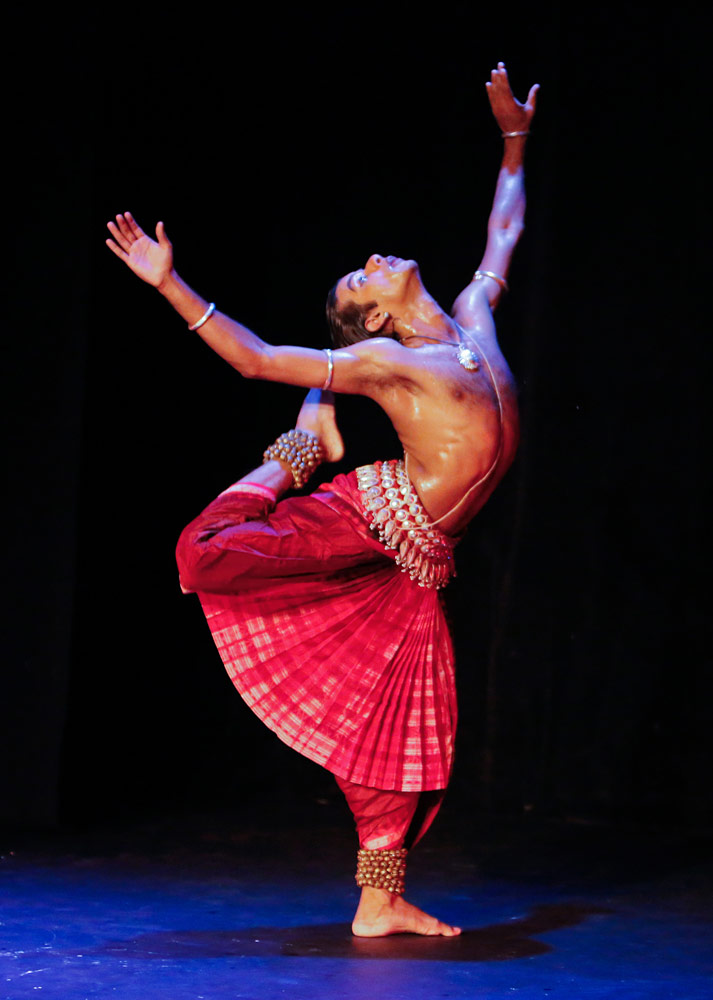
© World Music Institute. (Click image for larger version)
The artist who suffered the most in this respect was Rahul Acharya, the lone male. He has a beautiful, lithe body and handsome face and, because he dances bare-chested, one is made even more aware of the sinuous curve in his back. Because his legs are so strong – he’s a man, after all – he can create particularly striking, wide shapes with his lower body. Acharya finished off his performance with an exciting series of acrobatic feats – backbends, explosive jumps, high extensions of the leg, none of which are typical features of a female odissi concert. (Such feats come from the related male gotipua tradition, preserved by troupes of young boys who performed outside of temples.) But fluid and elegant as they were, his solos had an evenness of tone that dulled their effect. They felt slightly canned, like the music. Nor were the rhythms of his feet as thrillingly precise as those of some odissi dancers. (Again, this may have been the result of the recorded music.) And because he did not give any introductions to the songs – odissi is performed to vocal music from Orissa – it was difficult to make out what he was dancing about, even in passages of vivid mime.
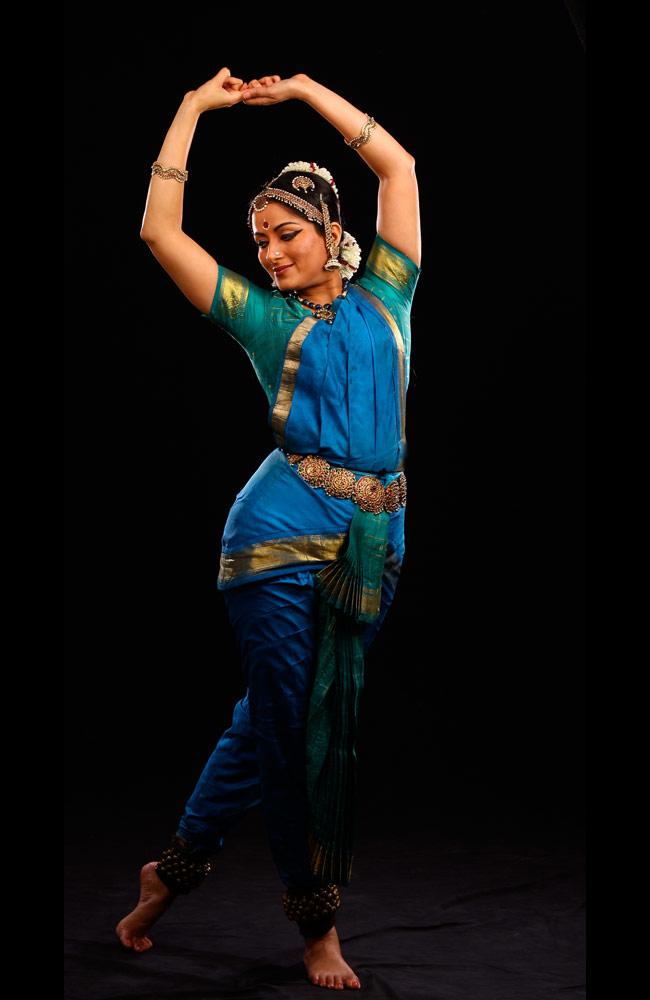
© World Music Institute. (Click image for larger version)
Vidhya Subramanian, the bharata natyam dancer who performed after the break, had the advantage of being accompanied by a thrilling ensemble – almost all young women, another anomaly – including the virtuoso percussionist Rajna Swaminathan. Swaminathan spun intricate rhythms with her fingers on the mridangam drum. (My eye was often pulled away from the dance to watch the dancing of her fingers.) Subramanian gave a simple, poetic introductions to each solo, explaining the essence of the lyrics, which were mellifluously sung by young Roopa Mahadevan. The first piece was a dance drama recounting a series of events from the Ramayana with a huge cast of characters, impossible to follow. But Subramanian’s characterisations were vivid, particularly when she became an elderly servant scheming against her masters. Here, she became almost monstrous. But her triumph was a slow song, “Sakhi He” to which she performed a dance representing Radha’s longing for Krishna. Here, her imagination overflowed – we could see her eyes and body burning with desire for physical union with the god, her lover. One of the great pleasures of Indian dance is this unabashed view of female desire. Sexual union – and the anticipation of it – is taken to a cosmic level. But in general Subramanian’s choreography was lacking in tension and variety; you weren’t waiting with bated breath to see what would happen next.
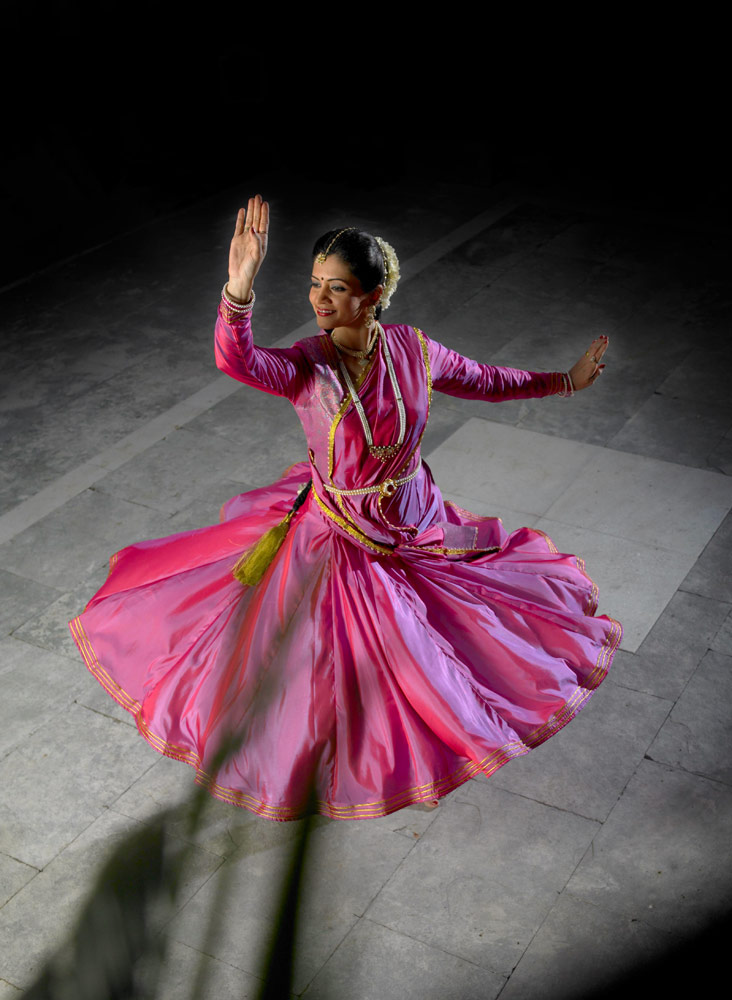
© World Music Institute. (Click image for larger version)
On the second day, a young kathak dancer, Shambhavi Dandekar, was again forced to perform to a recording, a real shame since kathak is even more closely linked to the music than bharata natyam or odissi. This dance from Northern India is more abstract, more upright, less full-bodied than the others; the arms are more of a decoration than an integral element in the movement. The focus is on the feet. As in tap dance and flamenco, rhythmic footwork is central. The dancer vocalizes a series of rhythmic, syllabic tongue-twisters punctuated by accents and pauses. Then the feet repeat the pattern verbatim, or spin further variations. The tiny Dandekar, almost child-like in build and demeanor, threw off each rhythmic sequence with absolute precision and charm. An Indian man sitting near me was in ecstasy, following along with taps of his hand. But without live music it just wasn’t the same.
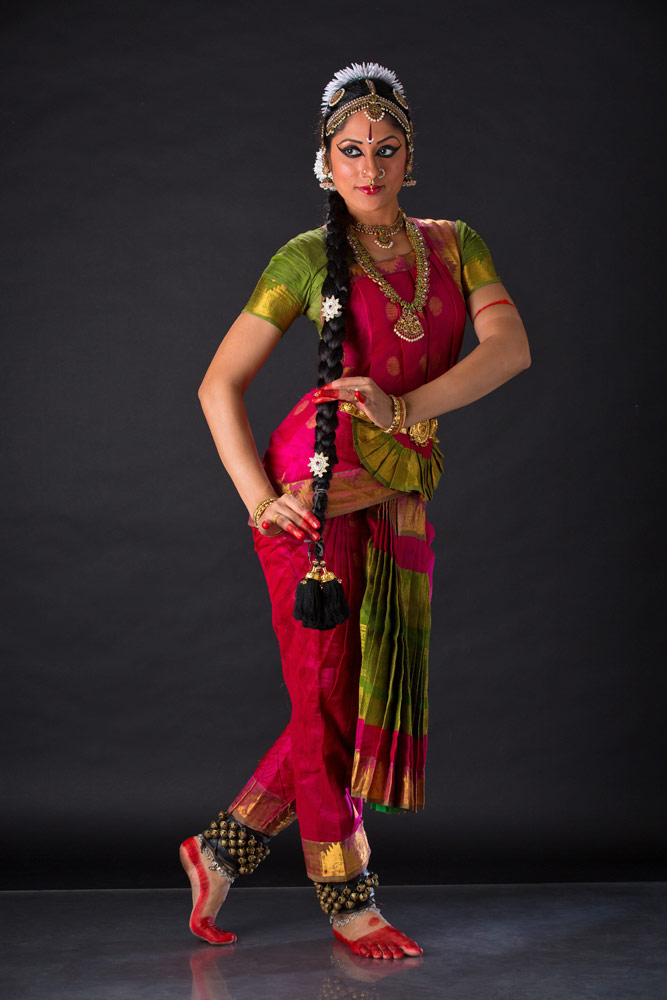
© World Music Institute. (Click image for larger version)
The most striking dancer of all was the last, Janaki Rangarajan, another bharata natyam specialist. The excellent musical ensemble returned. With her tall, imposing body, large face, and enormous, intelligent eyes, Rangarajan made an immediate impression, both in stillness and in movement. There was something almost male – less ingratiating, more muscular – about her dancing. The crossed-over poses were more crossed, the curves more monumental, her arms at times more angular, the jumps at once explosive and pliant. She started off strong, with a long solo that alternated lyrical passages and strong footwork. But then, as with Acharya, a certain monotony set in; the second piece was hard to follow, rambling and repetitive. The dancing itself was spectacular, but it needed more rigorous choreographic structure.
Which just goes to show that in Dehli as in Bangalore, Seville, Rio de Janeiro or New York, choreographic variety and imagination is essential. Just look at ballet – it is almost always pleasant to look at, but without a great choreographic mind behind it, it becomes dull. The greatest dancer-choreographers are never dull.










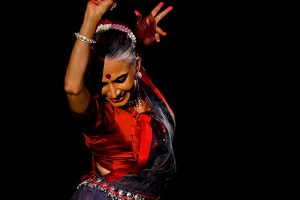

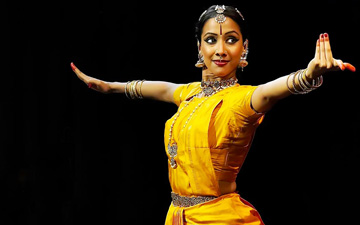
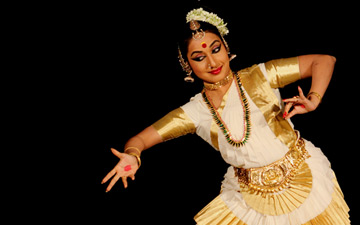


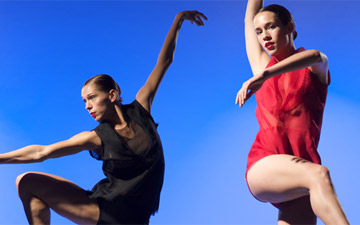
[…] World Music Institute presented a festival of Indian Dance, as it has the past three years. This time around, the performers were Rahul Acharya, Vidhya Subramanian, Shambhavi Dandekar, and Janaki Rangarajan. They performed in three different styles: Odissi, Bharata Natyam, and Kathak. Half the performances were to taped music—a shame—the other half were accompanied by an extraordinary ensemble, including Roopa Mahadevan, Puneet Panda, Anjna Swaminathan, Rajan Srikrishnan, and the marvelous percussionist Rajna Swaminathan. You can read my review for DanceTabs here. […]
Thanks for the thoughtful review (& for the mention!). All the points you make are so worth thinking of, I’m including them in a newsletter to Indian dancers all over the world.
I am so aware, (having given a lecture demonstrating the inter-connectedness between Indian dance & its music) of the disservice we do when we present Indian dance without live music. Alas, our alternative, given financial constraints, was to NOT present them at all, for while South Indian musicians can be found in the US, we have none for Odissi, & Kathak’s not easy given the complexity of dance compositions.
But point taken. For next year we should start fund-raising NOW!!!
Dear Rajika,
I can imagine how hard it is to gather the funds to pay for musicians, but how extraordinary that there are no musical ensembles to accmpany Odissi or Kathak in the United States. I wonder why that is? In any case, the festival is a joy, and we’re already looking forward to the next one. All best, Marina.